Nvidia’s RTX 30-series takes aim at one of the main criticisms of its first ray-tracing GPUs: raw performance. While the RTX 20-series was an impressive leap forward in terms of features, it didn’t always provide a significant bump up in performance on standard rasterised workloads, especially when taking their exorbitant prices into consideration. Not only does the RTX 3080 deliver a better overall experience for anyone still stuck on a GTX 10-series card, but there’s also enough of a gain in ray-tracing titles that makes a compelling argument for a gen-on-gen upgrade.
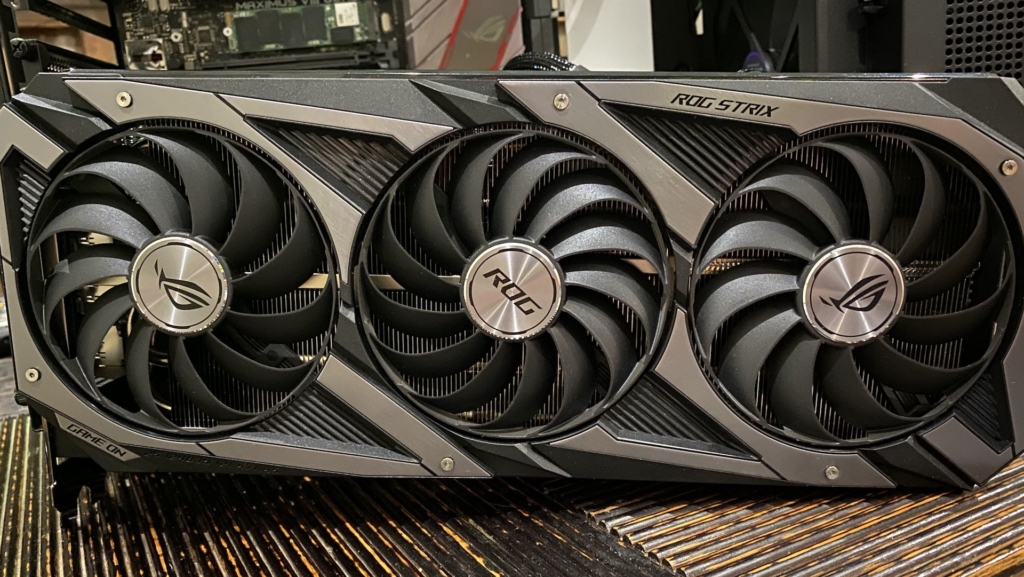
The RTX 3080 we have here is the ASUS Strix RTX 3080, given that Nvidia’s fancy Founder’s Edition GPUs aren’t available for purchase in South Africa. ASUS has been producing some of the best third-party GPUs for numerous generations now, with their Strix branding really kicking off with the GTX 970 and 980. A lot has changed since then with regards to cooler design and overall branding, but the main talking points of the Strix design language have thankfully remained in this RTX 3080.
What that means is that the monstrously big three fan cooler stays alarmingly silent even under heavy loads, while being inaudible when idle. The three fans–two spinning clockwise and the center fan anti-clockwise–move a lot of air through the massive finned heatsink attached to the redesigned board for the RTX 3080. It’s not a revolution like you’ll find on the Founder’s Edition cards with their push and pull configuration, but ASUS shows here that the traditional approach still has a lot going for it.
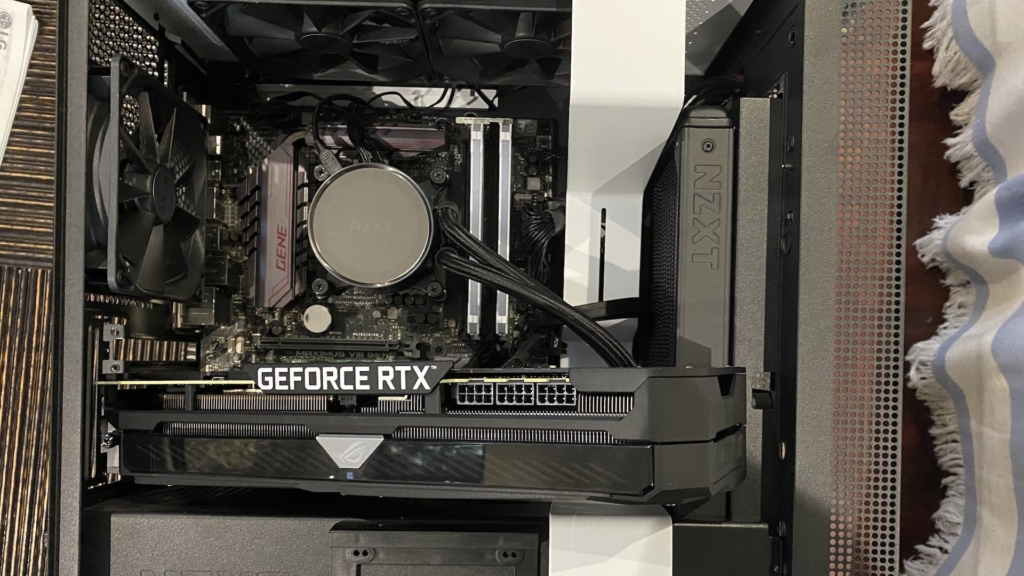
The RTX 3080 also features less RGB lighting than the same design on the RTX 20-series, with Asus opting for just a single strip of addressable lighting goodness on the side of the card and removing the small strips on the face. This means that vertical mounts will have far less to show off, but you’re still getting some subdued lighting if you choose a more traditional horizontal mounting. That might force you to move around other components in your case, however. At 31.85cm length, I was forced to entirely reconfigure my front-mounted AIO cooling for it to fit at all in my Micro-ATX build. To say that this card dwarfs the RTX 2080 Ti in size is an understatement.
Another big change is the power consumption requirements. The Founder’s Editions of the RTX 30-series line all ship with adapters for Nvidia’s new connector, but that’s not the case on the Strix RTX 3080. Instead, it makes use of a traditional 8-pin PCIe power connection, albeit three of them this time instead of the traditional two. With a recommendation of an 850W supply and general power consumption of 320W alone (we could not test this ourselves, but it’s widely reported at this point), the RTX 3080 demands a lot of power all the time. So, if you’re planning to slot this into an existing system, you need to be aware of both its size and consumption requirements more so than previous generations.
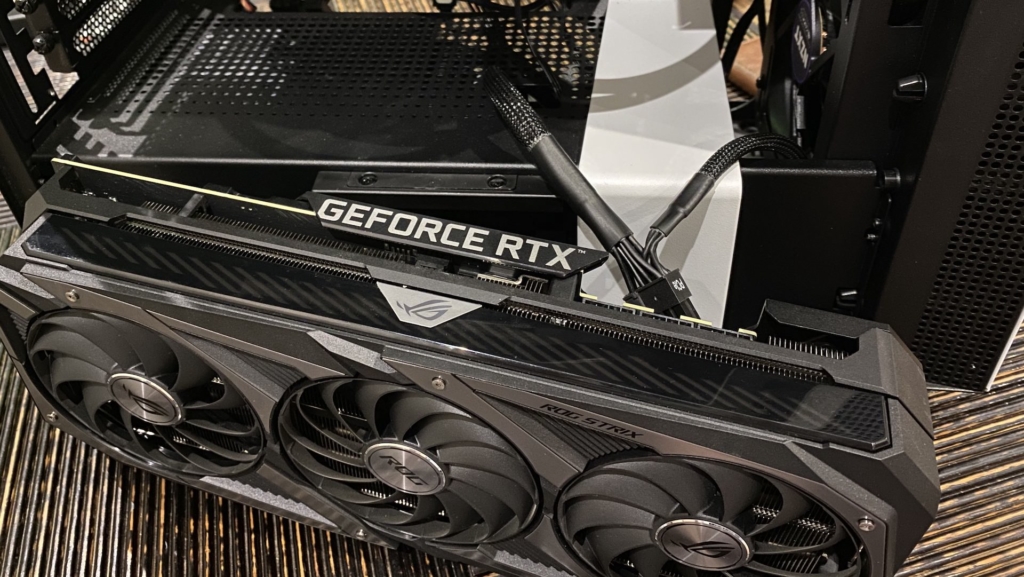
With that said, there’s no doubt you’re getting a lot of processing power in return for your troubles. The RTX 3080 features 8704 CUDA cores, running with a core clock of 1440MHz that can easily boost up to 1905MHz and sustain it. With the great cooling performance of the Asus Strix version, I never observed temperatures above 75 degrees Celsius, meaning that boost clock had room still to be pushed higher. The RTX 3080 does ship with only 10GB of VRAM, a full GB less than the RTX 2080 Ti, but does make up the ground by upgrading from GDDR6 to the faster GDDR6X. That gives you a memory speed of 19GBps across a 320-bit memory bus. If you’re aiming for gaming at 4K, you’re pretty much sorted for now.
That’s backed up by the benchmarks and testing below, which not only shows how capable the RTX 3080 is for high framerate gaming at resolutions like 1440p but that it’s well suited for providing stable 60FPS performance in some of the most demanding games at 4K. Additionally, when ray tracing is included, the RTX 3080 storms on by with drastically improved performance in these scenarios over the RTX 20-series.
Testing Setup:
- Intel Core i7-6700k (clocked to 4.5GHz)
- Asus Gene VIII Motherboard
- 32GB Corsair Vengeance 3200MHz CL16 RAM
- NZXT X62 Kraken AIO Cooler
- NZXT H400i chassis
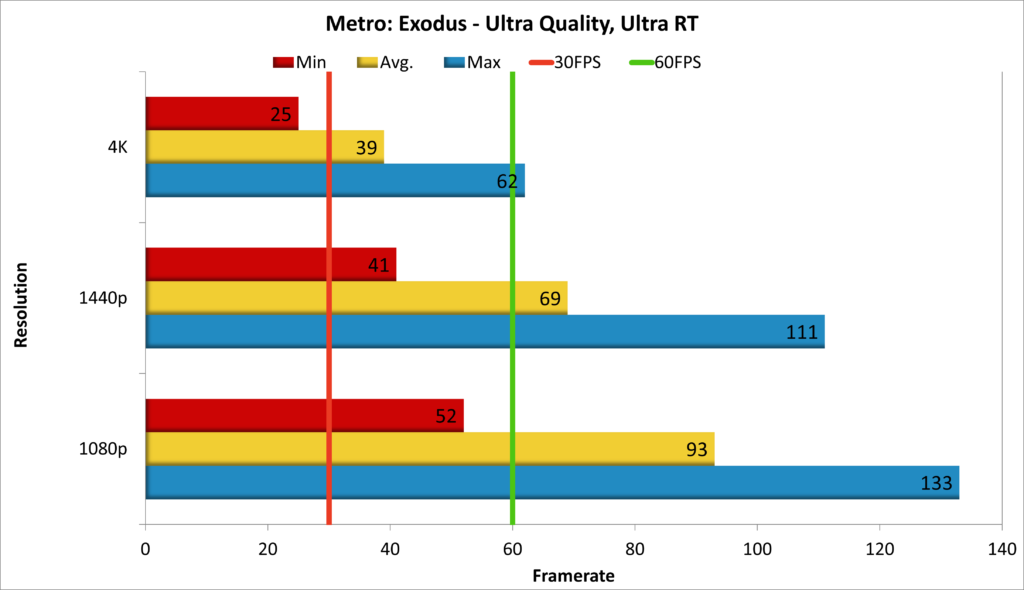
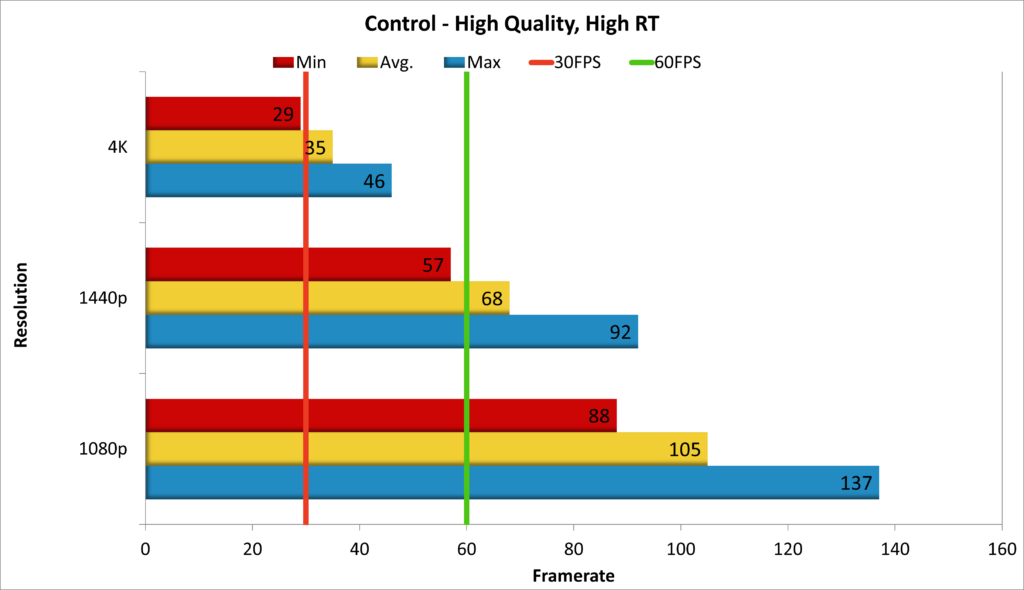
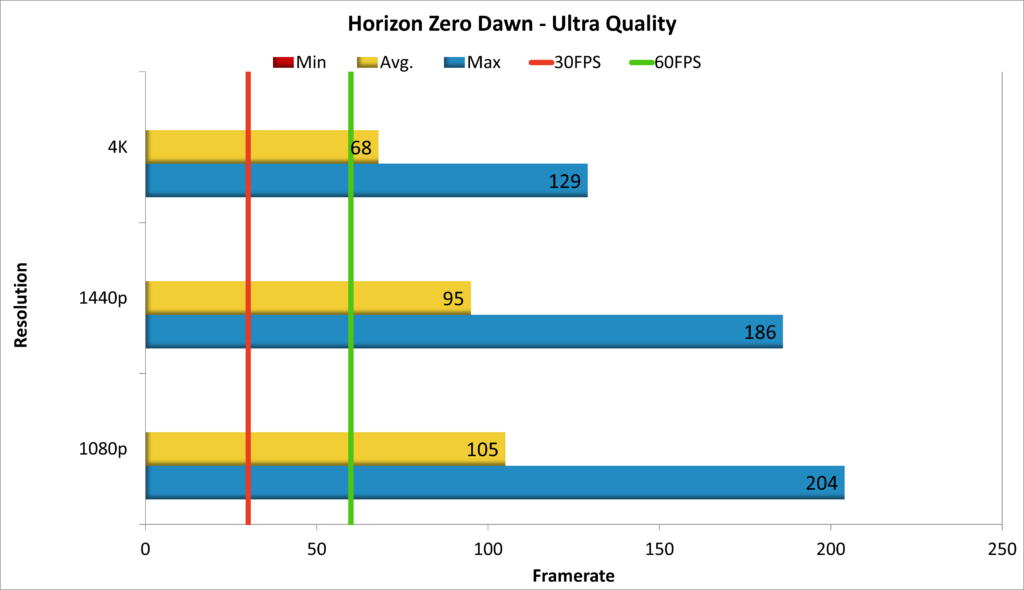

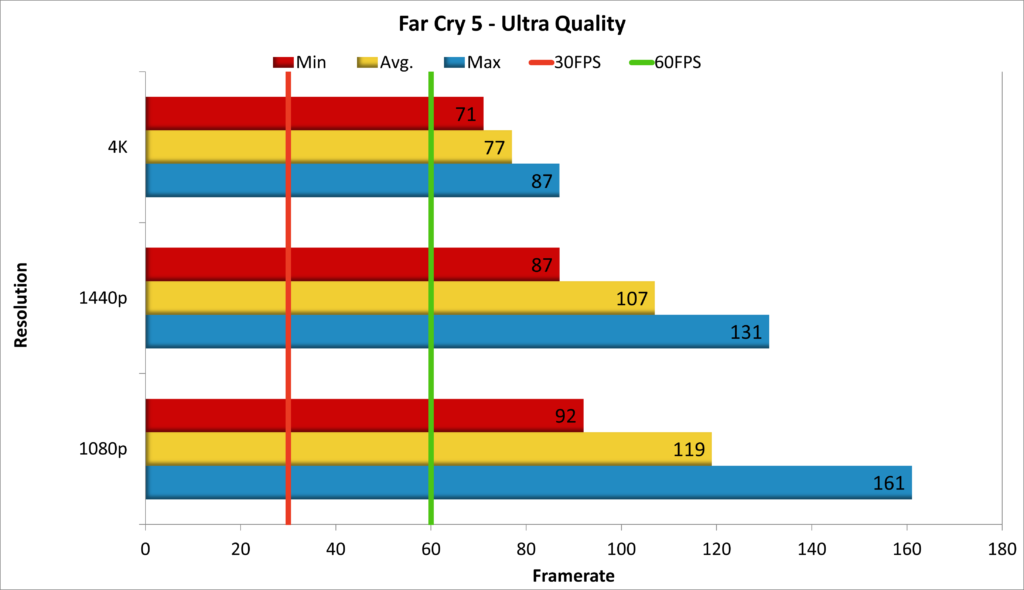
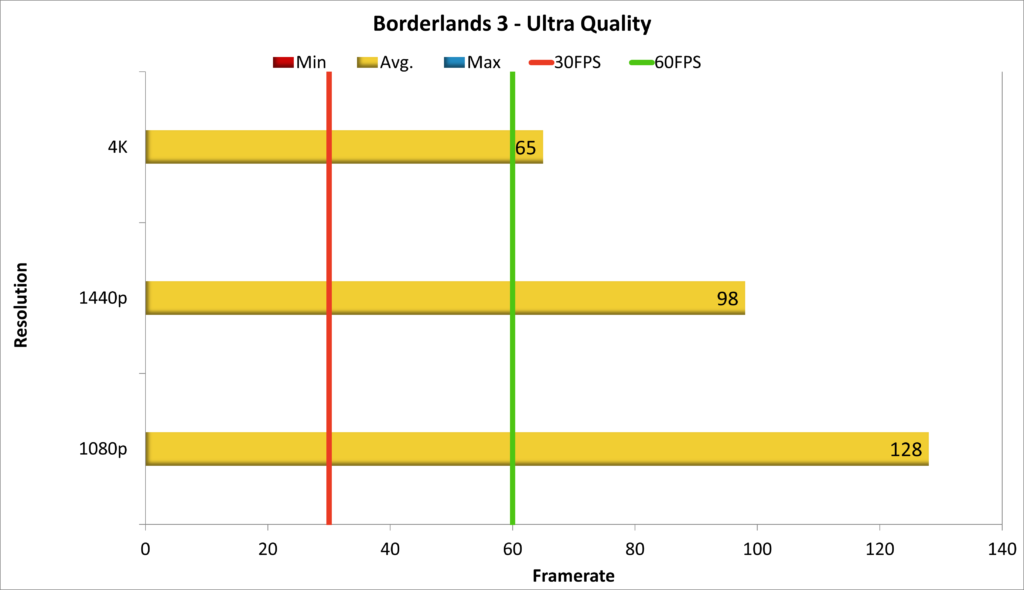
It’s evident in the Metro: Exodus results above that ray tracing can still be detrimental to overall performance, but in other titles that see improvements with DLSS 2.0 (such as control) the RTX 3080 is able to still hit great framerates while only using DLSS to knock down internal rendering to 1440p when playing at a native 4K output resolution.
With games that don’t make use of ray tracing or DLSS, such as Far Cry 5 and Borderlands 3 above, it’s clear that the RTX 3080 delivers where the RTX 20-series line often suffered. With traditional rasterized rendering the RTX 3080 produces major performance leaps gen-on-gen, which was often the complaint leveled at the RTX 20-series when directly compared to the popular GTX 10-series. There is no question that even if you aren’t eyeing out the most cutting-edge modern titles, the RTX 3080 delivers performance gains across the board.
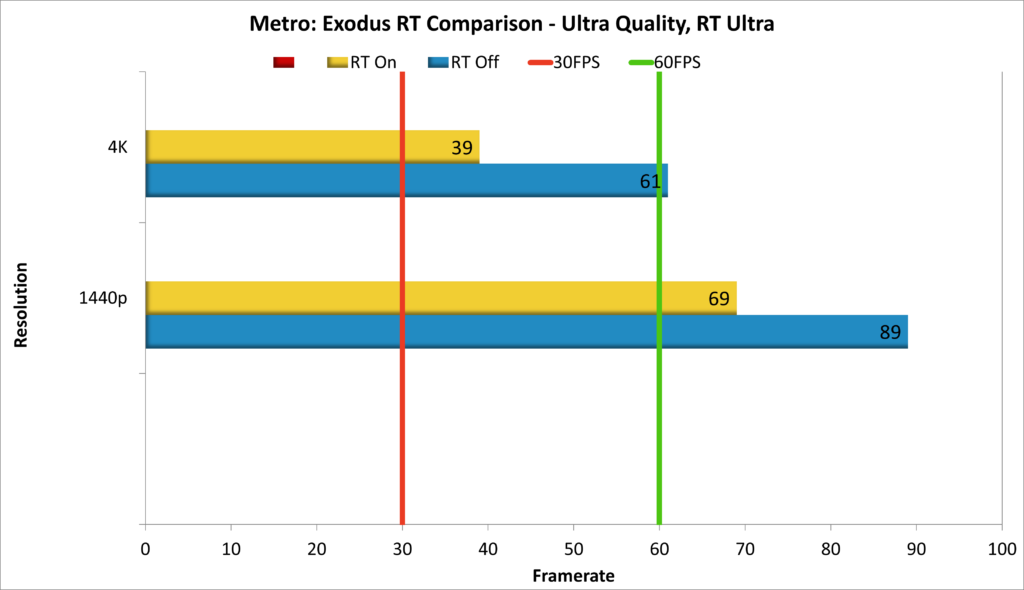
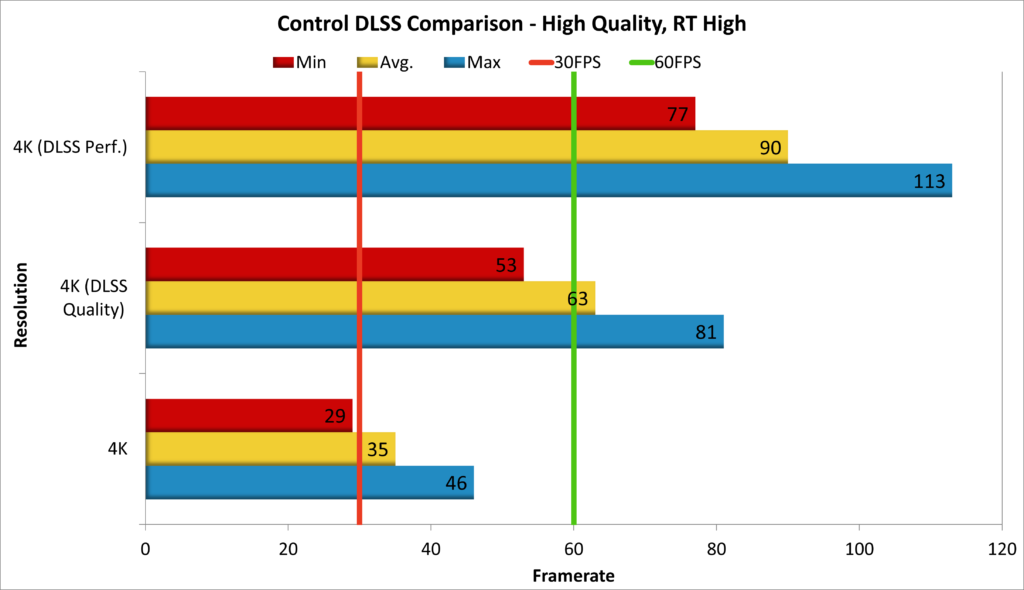
Synthetic results are a bit harder to glean results from at a glance, but there’s no doubt that the RTX 3080 back up its performance gains with great scores across the board of 3DMark’s range of tests.

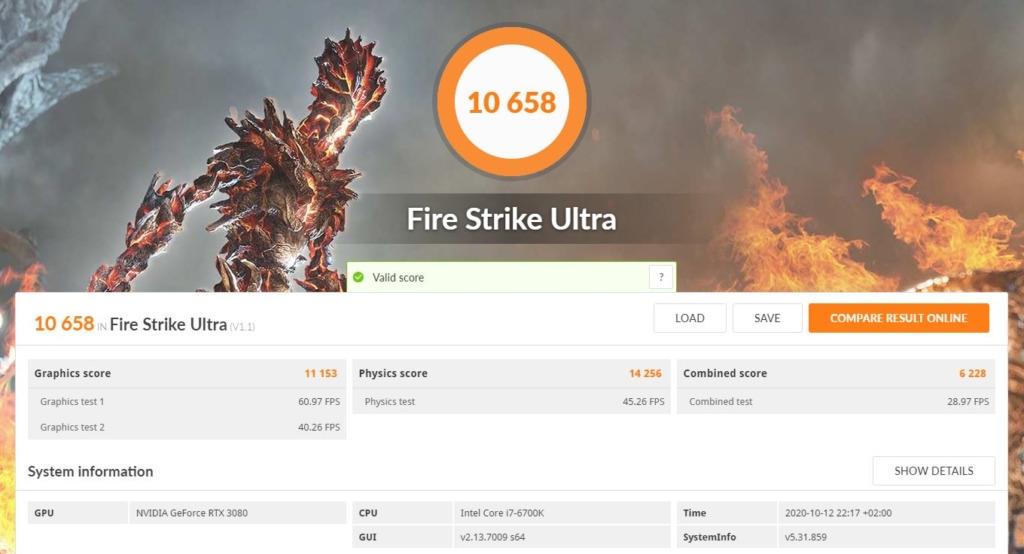

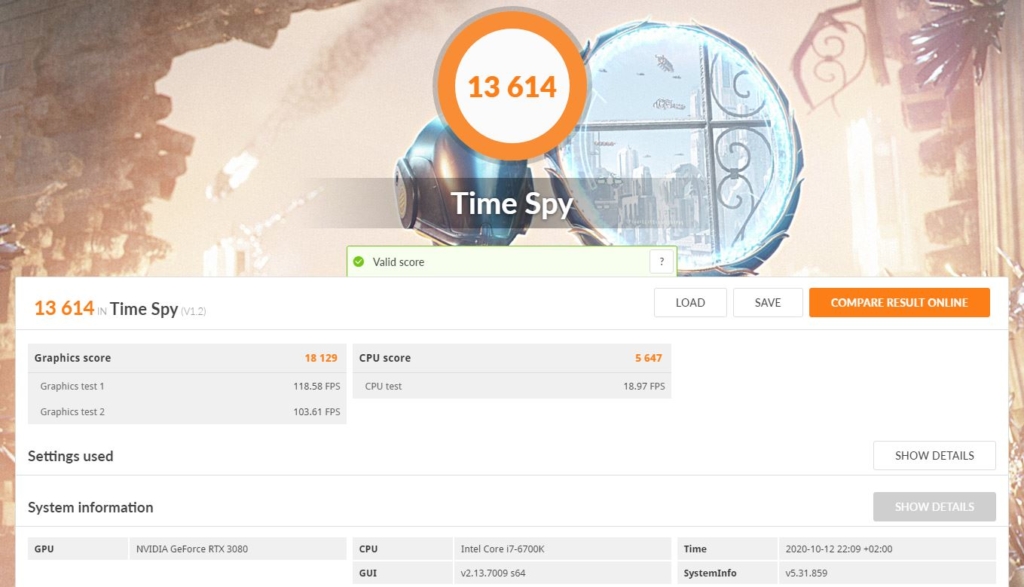
When compared directly with the RTX 2080 Ti, it’s staggering how far ahead a GPU that costs nearly half as much (in the dollar pricing, at least) is ahead. The RTX 3080 comfortable beats out the RTX 2080 Ti in every scenario that is bound by GPU limits (there were some test cases below clearly affected by the CPU, where results are closer together), and storms ahead in workloads that require both high resolutions and ray tracing support. Even with a gigabyte less VRAM, the increased speed of the GDDR6X memory makes up for the gap when pushing high-resolution textures into the card’s memory, although how much of an advantage this will be in the near future will be important to keep an eye on.

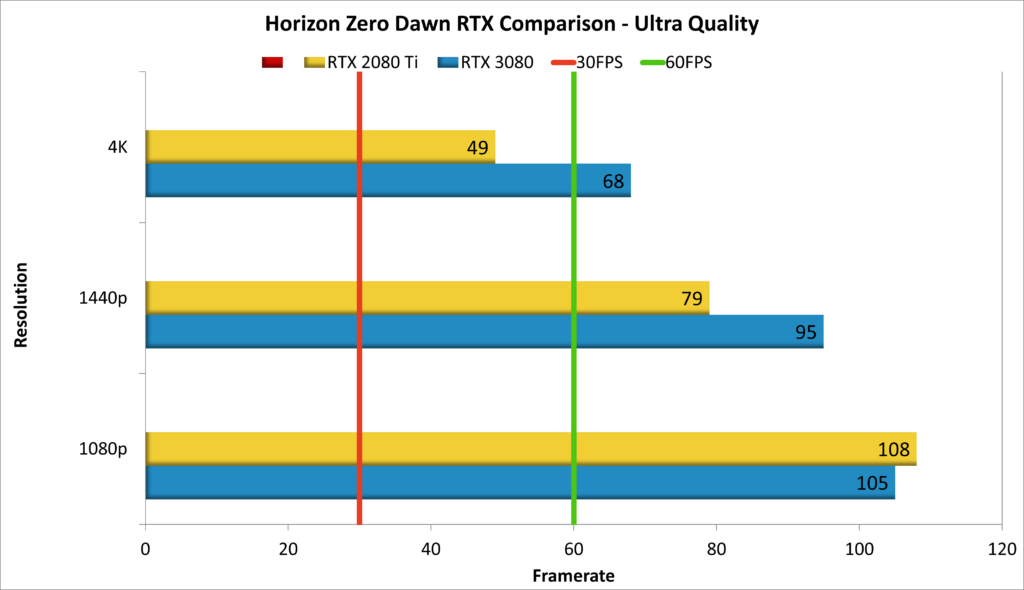
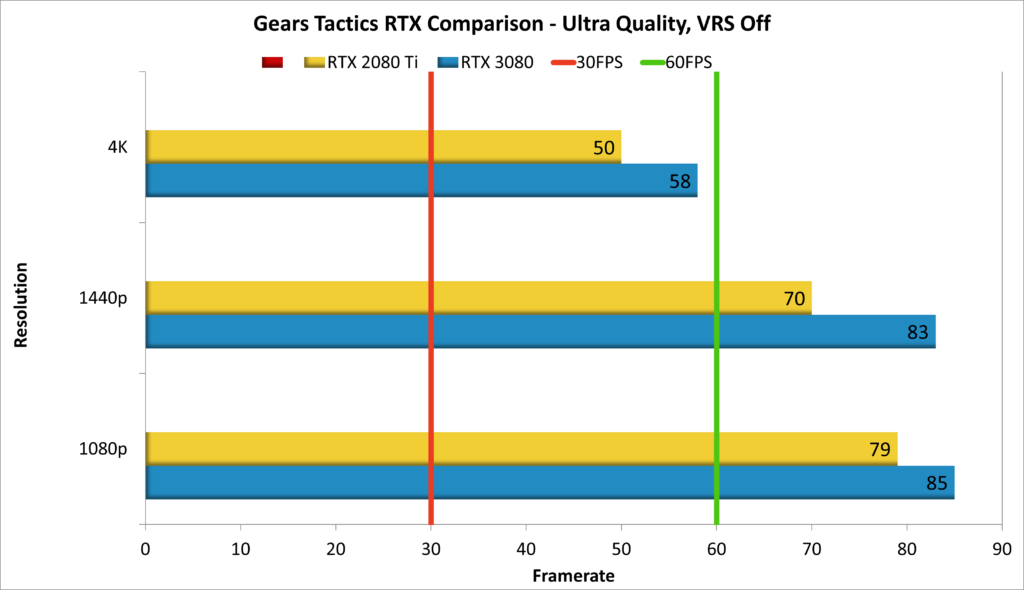
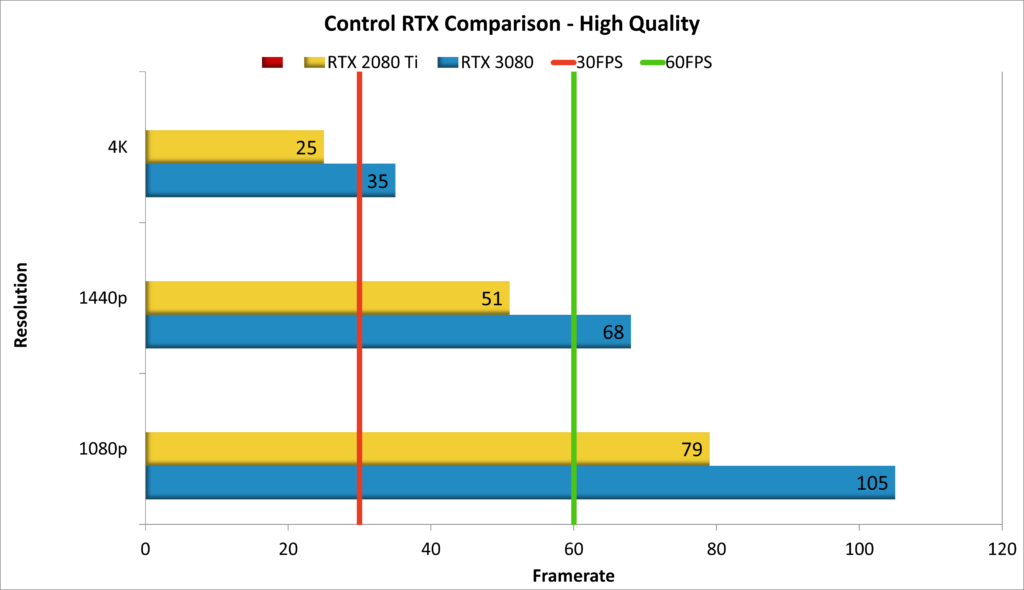
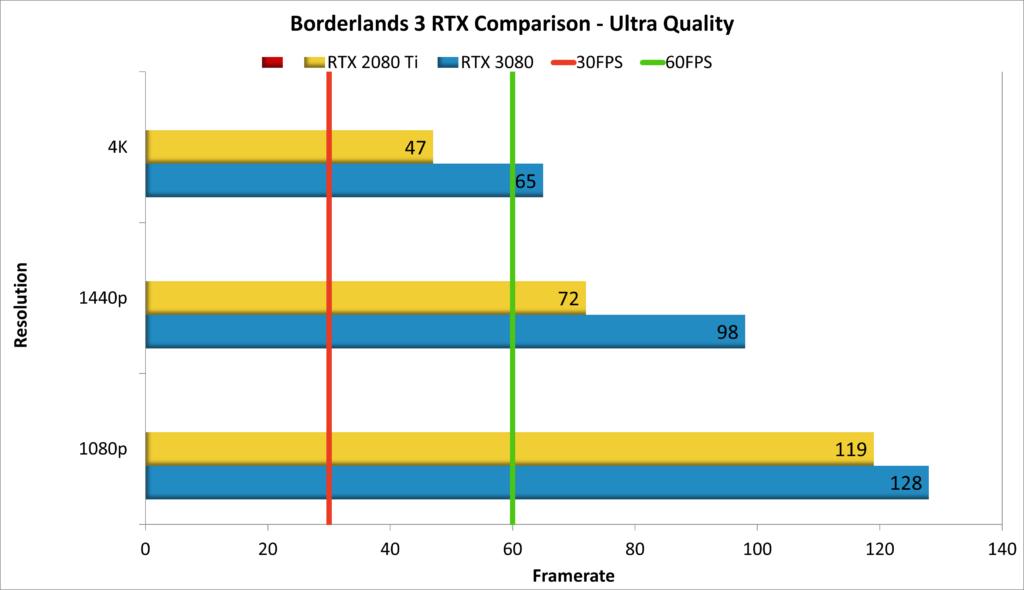
Of course, locally the point of value is somewhat different, albeit still in the favour of the RTX 3080. When comparing the two cards from above–the Asus Strix RTX 3080 and Gigabyte RTX 2080 Ti–there’s a difference of R3000.00 in favour of the new RTX 3080. Retailing from R21,999.00, the RTX 3080 is by no means an impulse purchase. It’s still an excessively expensive GPU that should give pause when considering the nearly R5000.00 cheaper RTX 3070 but coming in more than 10% cheaper than a RTX 2080 Ti shows just how aggressive Nvidia’s pricing is despite the exchange rate. If you want an even more staggering comparison, the Asus Strix RTX 2080 Ti produces even more of a gap, costing nearly 30% more at R29,999.00. Simply put, you should not be looking at any RTX 20-series cards above the RTX 2070 Super any longer.
But whether the performance difference necessitate an upgrade if you pulled the trigger last generation is tricker. One the one hand you must consider your entire system The RTX 3080 draws substantially more power and might be enough for you to have to upgrade your PSU in step with the GPU. Additionally, the faster performance might outstrip the potential of the rest of your system, which was certainly the case with my aging Intel Core i7-6700K. Especially at resolutions 1440p and lower, the RTX 3080 is absolute overkill for the here and now, and you’d be better served with a cheaper RTX 3070 that will be used to its fullest. But as a card that will last you for some time, it’s tough to argue against the RT 3080, unless you’ve already deeply invested in a RTX 2080 Super or Ti and might be better served waiting for the more powerful Ampere cards that will undoubtably be released over the next few months.
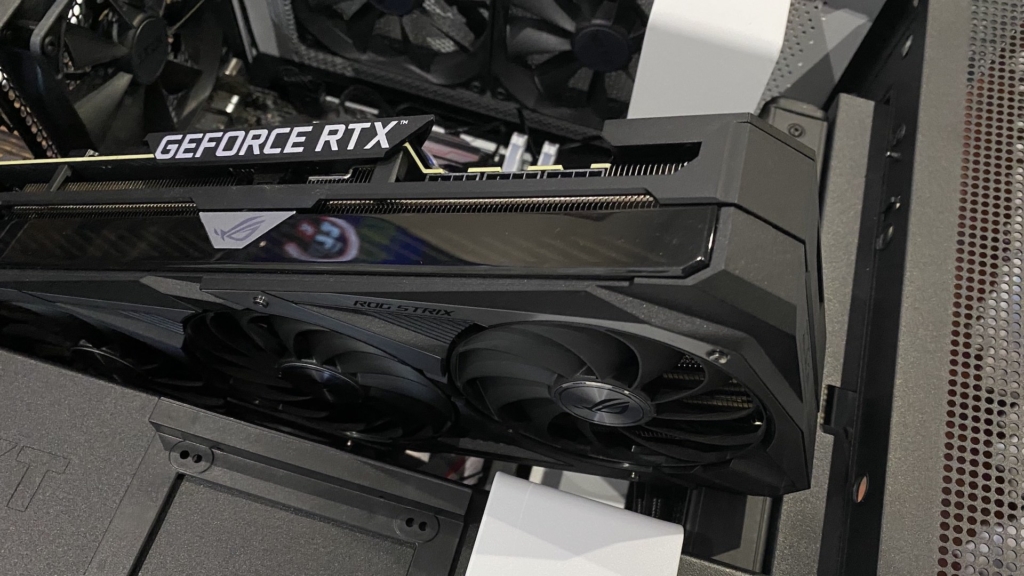
In a way the RTX 3080 is a boring card, because it does pretty much everything that you’d expect it to. It delivers the big performance leap that you would want from a next-generation GPU, while also splitting that difference between traditional and new ray-traced workloads. It’s the perfect no-nonsense card, not hiding anything underneath that is a compromise. The Asus Strix version here is stellar too, with cool and extremely quiet performance with just a touch of classy RGB added to the top. It’s a big card that requires a lot of power and comes in at a price that is still more than high enough to warrant careful consideration. But if you’re able to treat yourself, it’s difficult to imagine you could do better right now.
Last Updated: November 10, 2020
| Asus Strix RTX 3080 | |
|
The RTX 3080 delivers the generational performance that was lacking with Nvidia's first range of RTX cards, while also cutting down the prices and providing big boosts to framerates across a range of titles.
|
|
|---|---|
| Asus Strix RTX 3080 was reviewed on PC | |





















Iskape
November 10, 2020 at 11:12
I’m itching to see how AMD’s new cards stack against Nvidia’s. I resolve to believe they definitely haven’t taken the performance crown yet when comparing apples with apples, but they seem to have come close according to the benchmarks they provided in their presentation a while ago.
geel slang
November 10, 2020 at 11:12
Luckily we are spared the temptation to get a RTX3# before the Big Navi reviews hit. No stock!